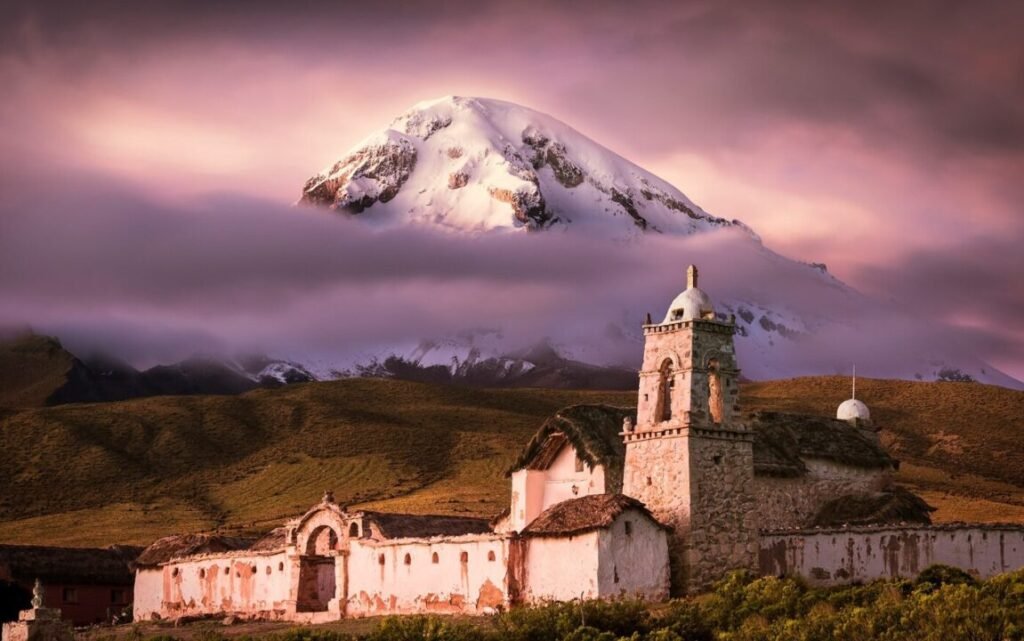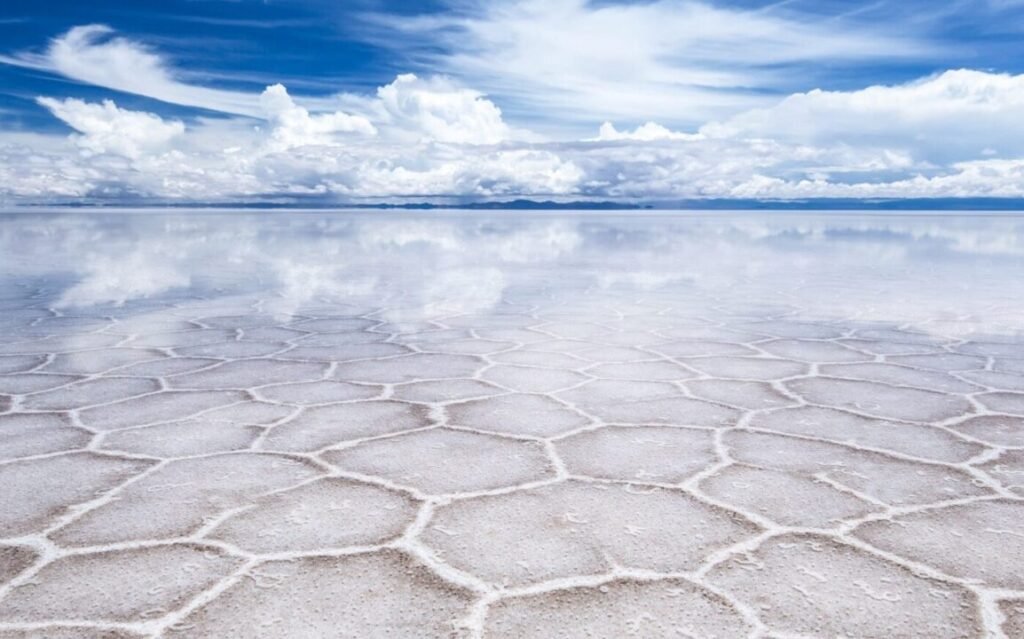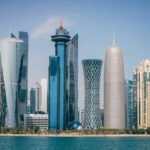You’re about to start on a captivating exploration of Bolivia, a land that’s as diverse as it is enchanting.
You’ll uncover ten surprising insights that will challenge your preconceptions and expand your understanding of this unique South American nation. From the snow-capped peaks to the heart of the thriving Amazon Rainforest, Bolivia’s landscapes are a proof of the planet’s breathtaking biodiversity.
You’ll learn about intriguing indigenous practices, confront the Quinoa paradox, and even discover the unexpected allure of Bolivian cuisine.
So, are you ready to peel back the layers of Bolivia’s rich cultural story?
Bolivia’s Diverse Landscape
While you may envision Bolivia as a landlocked country dominated by the Andes, it’s actually a mosaic of diverse landscapes, encompassing everything from snow-capped peaks and high-altitude deserts to lush rainforests and expansive savannas.
The mountainous terrain is breathtaking, with the Andes stretching across the country’s backbone, providing a dramatic backdrop for the daily life of Bolivians.

Llama herding is a common sight in these highlands, where locals clad in vibrant textiles guide their flocks through craggy paths and misty valleys.
This ancient practice is interwoven into the fabric of Bolivian culture, a reflection of their resilient spirit and adaptation to a challenging environment.
Unrivaled Biodiversity Wonders
Beyond its varied landscapes, Bolivia boasts an unrivaled biodiversity that’s sure to captivate and amaze you. Imagine venturing into the Amazon Rainforest, where you’ll encounter a kaleidoscope of wildlife, from stealthy jaguars to vibrant macaws.
This verdant paradise, teeming with life, is a reflection of Bolivia’s commitment to conservation.
Moreover, the skies above aren’t to be forgotten. Look up, and you might just catch a glimpse of the majestic Andean Condor, soaring effortlessly against the backdrop of the Andean peaks. Its impressive wingspan, one of the largest of any bird, is a sight to behold.
Bolivia’s biodiversity is an unending spectacle, a treat for all nature enthusiasts. It’s an experience that’s as diverse as it’s unforgettable.
Indigenous Cultures and Influences
Diving deeper into the heart of Bolivia, you’ll find a rich tapestry of indigenous cultures that have greatly influenced the country’s traditions, customs, and way of life.
The Aymara rituals, for instance, are a vibrant showcase of the country’s spiritual depth.
These practices, often tied to Pachamama (Mother Earth), involve elaborate ceremonies expressing gratitude for nature’s bounty. Their rituals often include offerings of coca leaves, food, and alcohol to the earth, embodying a deep-rooted respect for the environment.
Additionally, the Quechua language, another indigenous influence, remains widely spoken. Its melodic phrases echo through bustling markets, rural landscapes, and urban neighborhoods.
It’s not just a language, but a living testimony to Bolivia’s resilience and cultural richness, a legacy passed down through centuries.
The Quinoa Paradox
In the realm of Bolivia’s agricultural triumphs, there’s an intriguing phenomenon known as the ‘Quinoa Paradox’ that’s worth exploring.
As you investigate Bolivia’s quinoa production, you encounter a bitter-sweet reality.
Quinoa, a crop prized for its nutritional value and adaptability, has brought prosperity to Bolivian farmers. Its global demand has skyrocketed, leading to increased profits.
Yet, this success story conceals a paradox.
While the crop’s sustainability seems to promote ecological harmony, it’s causing a shift away from traditional farming practices and diverse cropping.
Farmers are planting more quinoa, neglecting other essential crops. This monoculture farming risks soil degradation and threatens long-term sustainability.
Therefore, the ‘Quinoa Paradox’ unravels a complex narrative of progress and potential peril.
Bolivia’s Salt Flat Phenomenon
Shifting our gaze from the paradoxical narrative of quinoa, let’s cast our eyes on another of Bolivia’s fascinating natural wonders: the vast, stunning salt flats.
Bolivia’s Salar de Uyuni, the world’s largest salt flat, is a dazzling expanse of white that stretches out as far as the eye can see. But it’s not just the sheer size that’ll take your breath away.

During the rainy season, a thin layer of water transforms the salt flats into a giant mirror, creating surreal mirror illusions that defy the laws of nature. It offers an unparalleled canvas for photography techniques, allowing for deceptive depth-of-field shots and spectacular reflection images.
This phenomenon is a true demonstration of the mesmerizing beauty that Bolivia offers.
The Unconventional Political Landscape
Stepping away from Bolivia’s natural wonders, you’ll find yourself immersed in its unique and dynamic political landscape, marked by unconventional practices and unexpected turns.
Presidential powers have been stretched and reshaped over the years, with leaders often staying in office beyond the typical term, a reality that stirs up social unrest among citizens yearning for change.
Street protests have become a common sight, embodying the nation’s struggle for democratic evolution.
The political scene is a cauldron of relentless power struggles, controversial policies, and ardent activism. But despite the turbulence, the spirit of Bolivia’s people remains unbroken, their resolve hardened.
This is Bolivia’s political narrative, a tale of resilience amidst the unconventional.
The Richness of Bolivian Cuisine
Explore the richness of Bolivian cuisine, a gastronomic journey that takes you through hearty stews, sizzling street food, and sweet delicacies, each dish narrating a unique story of the country’s diverse cultural heritage.
Your street food exploration will lead you to ‘salteñas’, a type of empanada filled with juicy meat and vegetables, or perhaps ‘anticuchos’, skewered beef hearts served with potatoes and spicy peanut sauce.
Traditional cooking techniques are still prevalent, with dishes like ‘llama charque’, dried llama meat, showcasing Bolivia’s ingenuity and resourcefulness. The cuisine here is a reflection of the nation’s agricultural wealth, with a cornucopia of native ingredients, from high-altitude grains like quinoa to tropical fruits such as chirimoya.
Every bite you take is a new revelation of Bolivia’s culinary richness.
Bolivian Folklore and Traditions
Immersing yourself in Bolivian folklore and traditions, you’ll find a vibrant tapestry of ancient rituals, colorful dances, and oral history that vividly encapsulate the nation’s rich cultural mosaic.
You’ll be intrigued by the prevalent witchcraft beliefs, a proof to the blend of indigenous and Catholic faiths. These beliefs manifest in unique practices like the ‘yatiri’, a healer who uses coca leaves for divination and healing.
Equally, enchanting are the Carnival celebrations, where you’ll witness the ‘Diablada’, a striking devil dance, and the ‘Morenada’, a dance satirizing the African slave trade. Here, tradition and joyous revelry intertwine, painting a lively picture of Bolivian culture that’s as deep as it’s diverse.
It’s a fascinating exploration, filled with surprising insights into Bolivia’s vibrant heritage.
The Puzzle of Bolivian Economy
Delving into the intricacies of Bolivia’s economy, you’ll encounter a complex puzzle marked by a rich tapestry of natural resources, a thriving informal sector, and an ongoing struggle to balance growth and equality.
Economic disparities are stark, with wealth concentrated in the hands of few while many Bolivians labor in the informal economy, beyond the reach of standard labor regulations.
Mining, a key sector, has a dual impact. It provides jobs and bolsters the economy, yet its environmental effects are concerning. The government grapples with these challenges, seeking to harness Bolivia’s resources for the benefit of all its people.
Therefore, the puzzle of Bolivia’s economy remains, a delicate balance between economic growth, social equality, and environmental sustainability.
Bolivian People’s Unique Lifestyle
Stepping into the world of Bolivian lifestyles, you’ll find a vibrant mosaic of traditions, values, and routines that set Bolivia’s people apart.
Witness locals wearing colorful Andean fashion, consisting of bowler hats, brightly woven shawls, and layered skirts reflecting their rich cultural heritage. Yet, urban adaptation is altering this traditional attire, with younger generations merging ancestral styles with modern trends.

Bolivians’ daily routines often revolve around nature, with sunrise ceremonies honoring Pachamama (Mother Earth) and communal farming practices. However, in bustling cities like La Paz, Bolivia’s rhythm shifts towards a more fast-paced, business-oriented lifestyle.
Despite these differences, one thing remains constant – the Bolivians’ warm, welcoming nature, making any visitor feel right at home.
Final Words
So, you’ve discovered the complex tapestry of Bolivia. You’re awed by its diverse landscapes, rich biodiversity, and deep-rooted indigenous influences.
You’ve grappled with the quinoa paradox, marveled at the salt flat phenomenon, relished the Bolivian cuisine, and danced to the rhythm of its folklore.
Despite the economic puzzle, you admire the unique lifestyle of the Bolivian people.
Now that you’ve peeked behind the curtain of Bolivia’s truths, you’re left with a profound appreciation of this vibrant, resilient nation.

